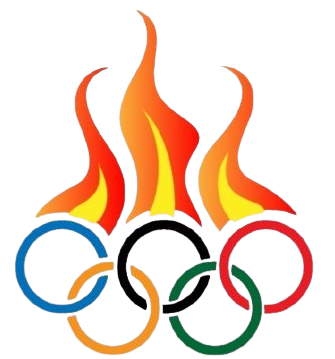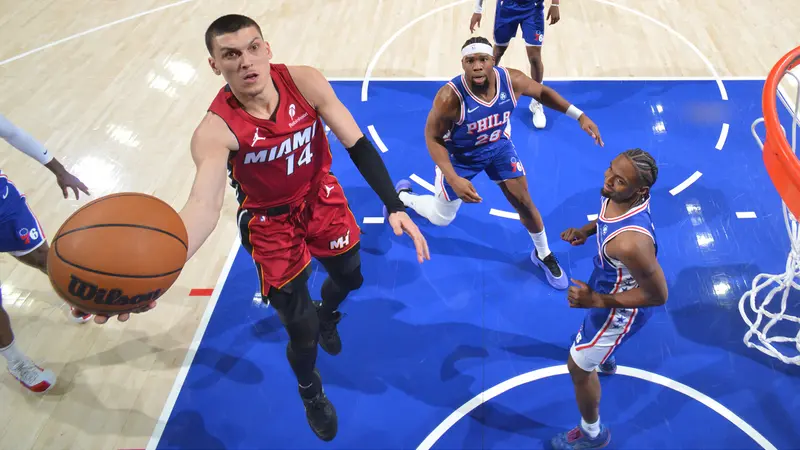The Philadelphia 76ers and Miami Heat have built one of the most competitive Eastern Conference rivalries in recent years. Whenever these two franchises meet, fans can expect high-level basketball — a clash of elite defense, star power, and contrasting playing styles. The 76ers rely heavily on the inside dominance of Joel Embiid and the dynamic scoring of Tyrese Maxey, while the Heat emphasizes team defense, discipline, and Jimmy Butler’s leadership in clutch moments.
This matchup served as a key test for both teams as they jockeyed for playoff positioning in a crowded Eastern Conference. With the Heat known for their gritty resilience and the 76ers for their star-driven offense, this meeting was bound to be a battle of wills as much as skill.
1. Importance of the Game and Season Context
Both teams entered this contest looking to establish momentum. The 76ers, adjusting to life with a restructured roster following key offseason moves, aimed to prove that they could maintain offensive fluidity even when Embiid was the focal point of every defense they faced. Miami, on the other hand, has been focused on consistency — balancing veteran leadership with emerging talent to remain a threat in the East.
Given their playoff history — including heated postseason clashes in recent years — the stakes were more than just another regular-season win. For Philadelphia, a victory meant proving its ability to handle pressure on the road. For Miami, it was about sending a message that “Heat Culture” remains a force to be reckoned with.
Venue, Date, and Audience Expectations
The game took place at the Kaseya Center in Miami, Florida, with a near-capacity crowd creating an electric atmosphere. Miami fans have a reputation for showing up big when a star opponent like Embiid visits, and this game was no exception. From the opening tip, the energy in the arena reflected the intensity on the court.
National audiences tuned in, eager to see whether the 76ers’ size and power could overcome Miami’s defense and pace. With playoff implications on the horizon, every possession felt significant.
2. Game Summary
Final Score and Game Highlights
In a game that lived up to expectations, the Philadelphia 76ers edged out the Miami Heat 112–106, closing strong in the fourth quarter. Joel Embiid dominated with 34 points and 15 rebounds, while Tyrese Maxey added 27 points and 8 assists. For Miami, Jimmy Butler contributed 25 points and 7 rebounds, with Bam Adebayo recording a double-double of 18 points and 11 rebounds.
Both teams showcased stretches of excellence — the Heat with their defensive runs, and the Sixers with clutch perimeter shooting. In the end, Philadelphia’s balanced offense and Embiid’s interior presence proved decisive.
Quarter-by-Quarter Performance
-
1st Quarter: Miami opened aggressively, forcing turnovers and running in transition. The Heat led 28–25 after one, thanks to Butler’s early energy and Adebayo’s defensive presence.
-
2nd Quarter: Philadelphia found rhythm through Maxey, whose speed broke through Miami’s half-court defense. Embiid added timely buckets, and the 76ers led 54–51 at halftime.
-
3rd Quarter: Miami’s bench, led by Tyler Herro, sparked a comeback with perimeter shooting, retaking the lead briefly. However, the Sixers responded with a 10–2 run to end the quarter up 83–78.
-
4th Quarter: The final frame was all about execution. Embiid controlled the paint, while Miami struggled to find consistent offense outside of Butler. Philadelphia sealed the win with free throws and smart possessions down the stretch.
Key Moments That Shaped the Outcome
Several turning points defined the outcome. A crucial defensive stop by P.J. Tucker late in the fourth quarter — followed by an Embiid and-one — swung momentum Philadelphia’s way. Miami had a chance to close the gap, but missed back-to-back three-pointers in the final minute. The Sixers’ composure under pressure and rebounding edge ultimately made the difference.
3. Team Statistics Overview
Shooting Percentages and Efficiency
Philadelphia shot 48% from the field and 38% from three-point range, displaying balanced inside-out scoring. Miami, while efficient early, cooled off to 44% shooting overall and 33% from deep. Both teams excelled at drawing fouls, but the 76ers capitalized better at the line, hitting 22 of 26 free throws.
Rebounds, Assists, and Turnovers Comparison
The 76ers outrebounded the Heat 46–39, led by Embiid’s dominance. Miami’s ball movement was slightly sharper, recording 25 assists to Philadelphia’s 23, but turnovers hurt them — especially unforced ones in the final quarter. The 76ers kept theirs to just 11 turnovers, a testament to Maxey’s composure at point guard.
Team Defense and Transition Play
Miami’s defensive rotations were disciplined, but Philadelphia’s length and size gave them second-chance opportunities. The 76ers also controlled transition points, outscoring the Heat 16–10 on fast breaks — a surprising edge for a team built around half-court offense.
4. Philadelphia 76ers Player Stats
4.1 Scoring Leaders and Offensive Impact
-
Joel Embiid: 34 points, 15 rebounds
-
Tyrese Maxey: 27 points, 8 assists
-
Tobias Harris: 16 points, 7 rebounds
Embiid dominated early and late, scoring efficiently through double-teams. Maxey’s speed opened driving lanes, while Harris contributed timely midrange shots.
4.2 Rebounding and Paint Presence
Philadelphia’s interior control came primarily through Embiid’s rebounding, complemented by Paul Reed off the bench. Their collective effort limited Miami’s second-chance scoring.
4.3 Playmaking and Assist Distribution
Maxey’s evolution as a playmaker stood out. His ability to penetrate and kick out to shooters helped maintain floor spacing. Harris and Embiid also contributed secondary assists, showing improved offensive cohesion.
4.4 Defensive Efforts: Steals, Blocks, and Rating
Defensively, the Sixers excelled with 7 steals and 6 blocks. Embiid anchored the defense, altering countless shots, while De’Anthony Melton and Kelly Oubre Jr. pressured Miami’s perimeter players effectively.
4.5 Efficiency, Plus/Minus, and Minutes Played
Embiid posted a +12 plus/minus, while Maxey registered +9, reflecting their impact. Both logged heavy minutes, but their conditioning held strong down the stretch.
5. Miami Heat Player Stats
5.1 Scoring Leaders and Shooting Performance
-
Jimmy Butler: 25 points, 7 rebounds, 4 assists
-
Bam Adebayo: 18 points, 11 rebounds
-
Tyler Herro: 20 points, 5 assists
Butler’s scoring came efficiently early but tapered late as Philadelphia tightened coverage. Herro provided much-needed spacing, while Adebayo was effective in pick-and-rolls.
5.2 Rebounds and Second-Chance Opportunities
Miami struggled slightly on the glass, especially in late-game scenarios. Adebayo worked hard, but the lack of frontcourt depth showed when Embiid rested.
5.3 Ball Movement and Assist Totals
The Heat recorded 25 assists, led by Herro and Butler. Their offense thrived when they shared the ball, but stagnation in isolation plays hurt them late.
5.4 Defensive Strength: Steals, Blocks, and Pressure
The Heat’s defense forced 11 turnovers and notched 8 steals, highlighted by Butler’s on-ball pressure. However, the interior defense faltered once Embiid began drawing double teams effectively.
5.5 Efficiency Ratings and On-Court Impact
Herro had the best shooting percentage at 48%, while Butler shot 44%. Miami’s bench, though energetic, had a negative net rating, reflecting limited scoring impact compared to Philadelphia’s rotation.
6. Key Player Battles and Matchups
Joel Embiid vs Bam Adebayo: Battle in the Paint
This was the matchup everyone anticipated. Adebayo fought valiantly, using mobility and quick hands to challenge Embiid. However, Embiid’s size and footwork proved decisive, earning him numerous trips to the free-throw line and controlling the rebounding battle.
Jimmy Butler vs Tyrese Maxey: Star Power Showdown
Butler’s leadership and Maxey’s energy defined their teams’ offensive tempo. Maxey’s quickness gave the Heat’s defense problems, while Butler’s physicality punished switches. Ultimately, Maxey’s clutch shot-making down the stretch gave the 76ers a slight edge.
Role Players Who Changed the Game
De’Anthony Melton’s perimeter defense and Kelly Oubre Jr.’s hustle were underrated difference-makers for Philadelphia. For Miami, rookie Jaime Jaquez Jr. added sparks of energy, but the lack of consistent bench scoring remained a challenge.
7. Advanced Metrics & Analytics
Player Efficiency Rating (PER) Comparison
Embiid posted a game-high PER of 32.4, while Butler’s was 24.8. The difference underscores Embiid’s two-way dominance.
Usage Rate and True Shooting Percentage
Embiid’s usage rate hovered around 35%, yet his true shooting percentage of 63% highlighted efficiency despite heavy defensive focus. Maxey’s 61% true shooting added valuable support. Butler’s efficiency dipped slightly to 57% due to late-game misses.
Offensive and Defensive Ratings
Philadelphia’s offensive rating stood at 118.2, while Miami’s was 111.6. Defensively, the 76ers held the Heat to below their season average, displaying better rotational discipline.
Net Rating and Clutch Performance
In clutch minutes (final 5 minutes, within 5 points), Philadelphia outscored Miami 14–8, reflecting poise and superior execution. Their +6 net rating in that span defined the outcome.
8. Turning Points & Momentum Shifts
Scoring Runs and Critical Moments
The third-quarter stretch where the 76ers went on a 10–2 run flipped the game’s momentum. Miami’s offense stagnated during that period, allowing Philadelphia to seize control.
Game-Changing Plays in the Final Minutes
Embiid’s late block on Adebayo and Maxey’s pull-up jumper with 1:10 remaining were pivotal. Miami’s missed three-pointers in the final 40 seconds sealed their fate.
Who Stepped Up Under Pressure
Tyrese Maxey’s fourth-quarter composure stood out. His ability to manage pace, create shots, and hit key free throws showcased his growth into a reliable closer.
9. Observations & Takeaways
Strengths and Weaknesses Revealed by the Stats
The 76ers’ inside scoring and rebounding gave them an advantage, while Miami’s lack of secondary scoring options hurt them in half-court sets. Defensively, both teams were strong, but Philadelphia’s discipline on switches stood out.
Who Exceeded Expectations and Who Struggled
Maxey exceeded expectations, showing leadership beyond his years. On the other hand, Miami’s supporting cast — particularly their bench — struggled to provide consistent offense. Tyler Herro’s effort was commendable, but Miami’s overall spacing issues limited him late.
What This Means for Upcoming Games
For Philadelphia, this win reinforces their position as a legitimate Eastern contender. Embiid remains unstoppable when healthy, and Maxey’s development makes the team more dynamic. Miami must focus on improving offensive consistency and finding more scoring depth off the bench as the season progresses.
10. Conclusion
Summary of Standout Performances
Joel Embiid was the clear star, dominating both ends of the floor. Maxey’s poise and speed elevated Philadelphia’s attack, while Butler and Adebayo kept Miami competitive throughout. The game was a showcase of Eastern Conference basketball at its finest — physical, strategic, and decided by execution.
Final Thoughts and Playoff Implications
The 76ers’ 112–106 victory underscored their improved chemistry and resilience. Miami, though falling short, demonstrated its trademark toughness. If this game was any preview of a future playoff series, fans can expect another thrilling chapter in one of the NBA’s most compelling rivalries.

